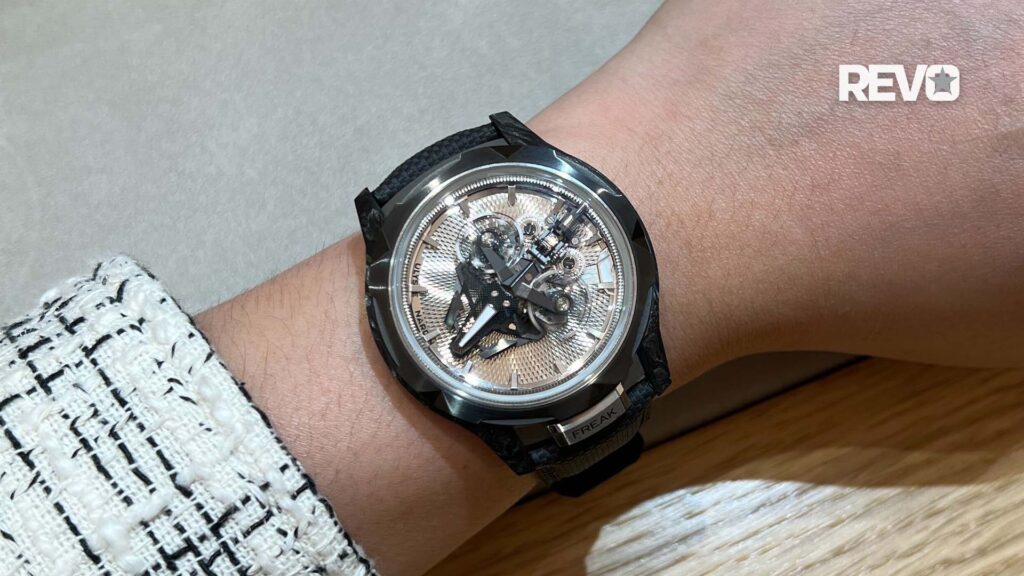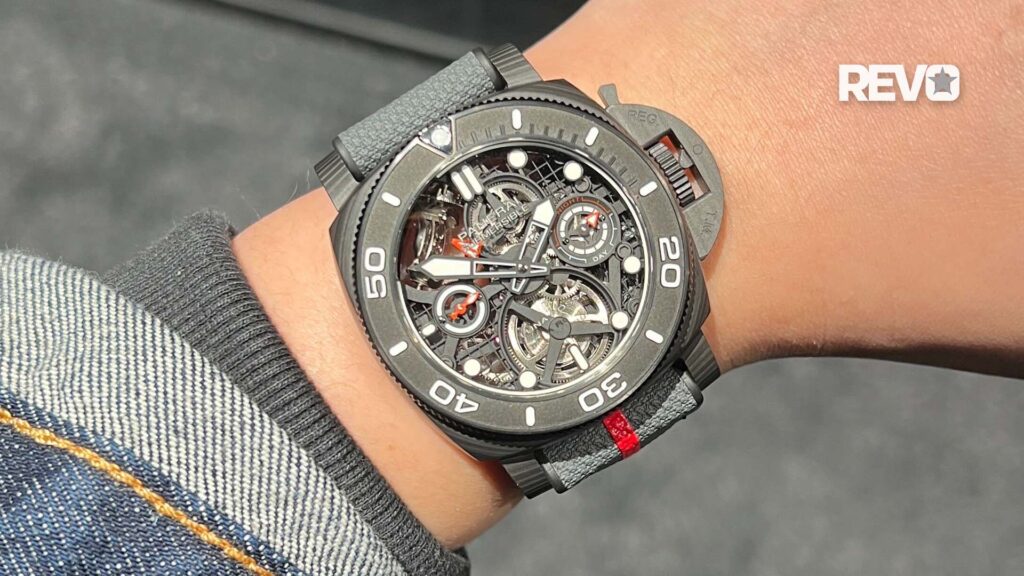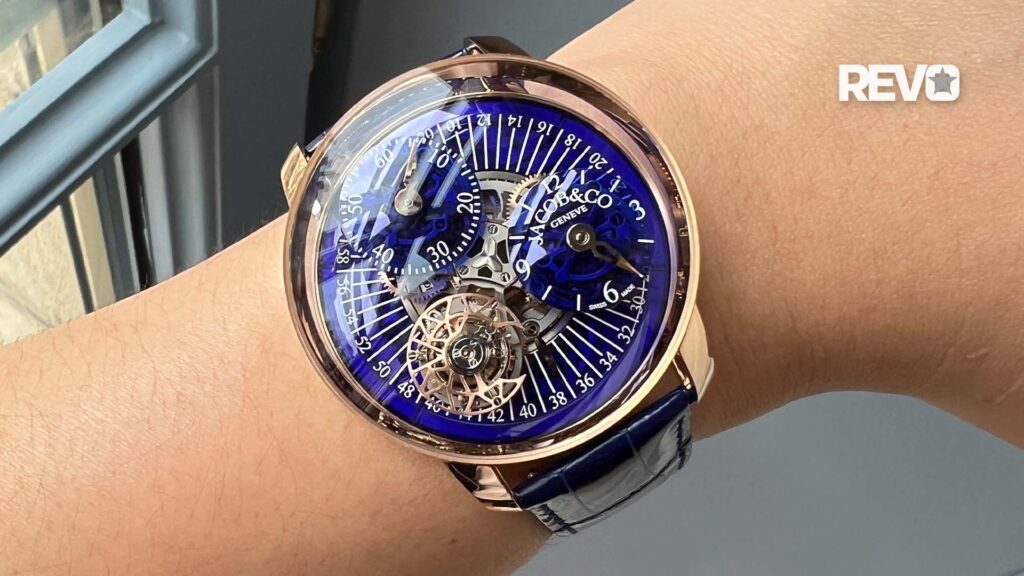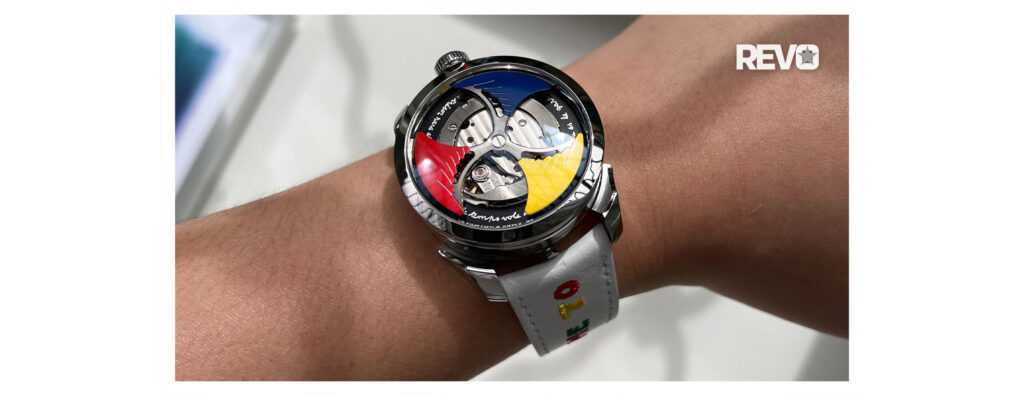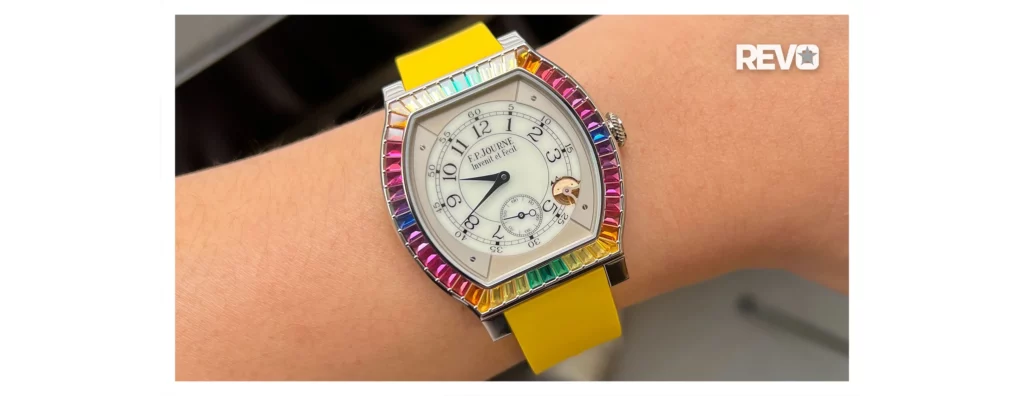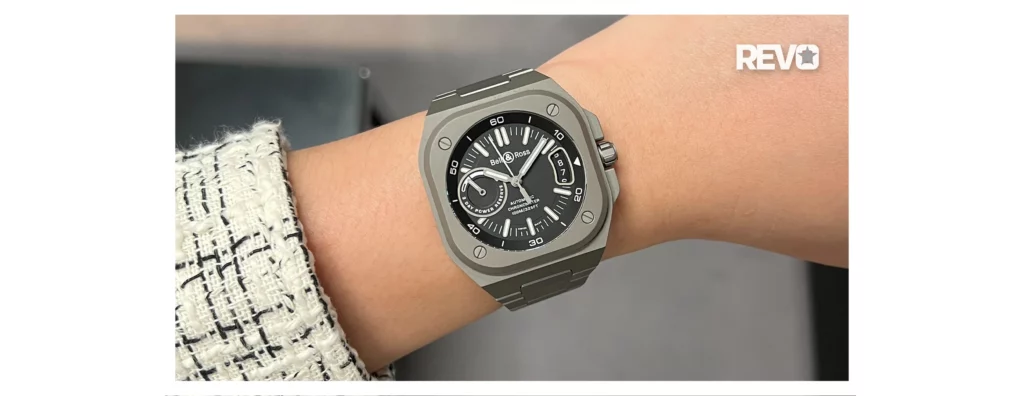I feel like I often read about the similarities between collecting watches and collecting cars. The mindset, appreciation for heritage and aesthetics combined with the enjoyment of the pursuit of a long sought-after piece for one’s collection, are all commonalities between both arenas of collecting. There are myriad parallels that we could unpack, but today I want to draw a comparison that is important for both disciplines — the use of coachbuilders and casemakers. In the 1930s, Italian coachbuilder Battista “Pinin” Farina established his own independent coachworks “Carrozzeria Pinin Farina.” Pininfarina went on to become one of the most celebrated car designers, creating designs and body work for Ferrari, Alfa Romeo, Fiat, Lancia, Ford and Maserati to name a few. This meant there were similarities between the different manufacturers’ cars, and indeed the house style of Pininfarina was something the brands wanted. In watchmaking, a similar situation existed with the manufacturing and use of wristwatch cases.
A Collectible Case
François Borgel established his eponymous case-making company in 1880. In 1891, Borgel was awarded a patent for a dust- and waterproof one-piece, screw-in watchcase. The company went on to become highly regarded as casemakers, especially for their screw-cases that were, at the time, deemed to be waterproof, or at least as waterproof as a wristwatch needed to be for that era. In 1912, François Borgel died and his daughter Louisa took over the business for a short time before selling the company to the Taubert family. The Taubert family continued to use the François Borgel name and also continued to file numerous patents, including a screw-down caseback with 10 sides, known as the “decagonal” case. The waterproof decagonal case that Taubert produced went on to be used by a number of watch brands for their chronographs, including Patek Philippe, Vacheron Constantin and, the subject of this article, Mido.
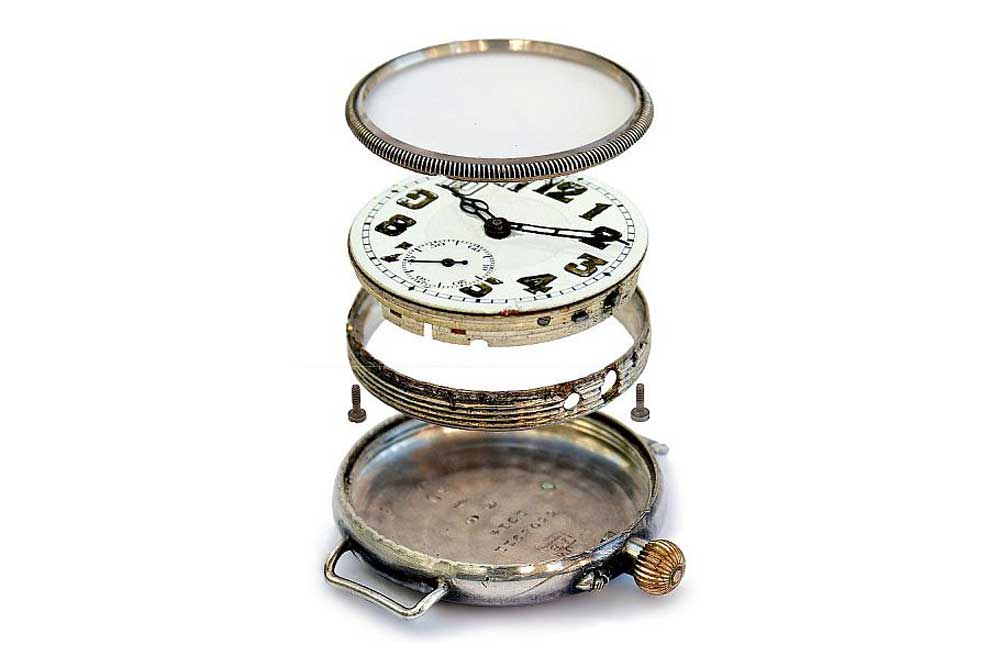
In 1891, Borgel was awarded a patent for a dust- and waterproof one-piece, screw-in watch case.
The Mido Multi-Centerchrono is housed in a steel case made under the name François Borgel, but during the time of ownership of the Taubert family. The decagonal case is easily identifiable due to the 10-sided caseback, which can be opened with a spanner-esque tool with a 10-sided hole in it. These cases are two things, waterproof and antimagnetic. The waterproof qualities are made possible by the fact that the 10-sided caseback screws into a one-piece case and the winding stem and chrono pushers have cork seals. The antimagnetic properties are made possible by an inner “case” formed by the dial, a ring around the movement and a dust cap between the movement and the caseback. These watches are actually pretty robust and would be suitable for a range of professional applications.
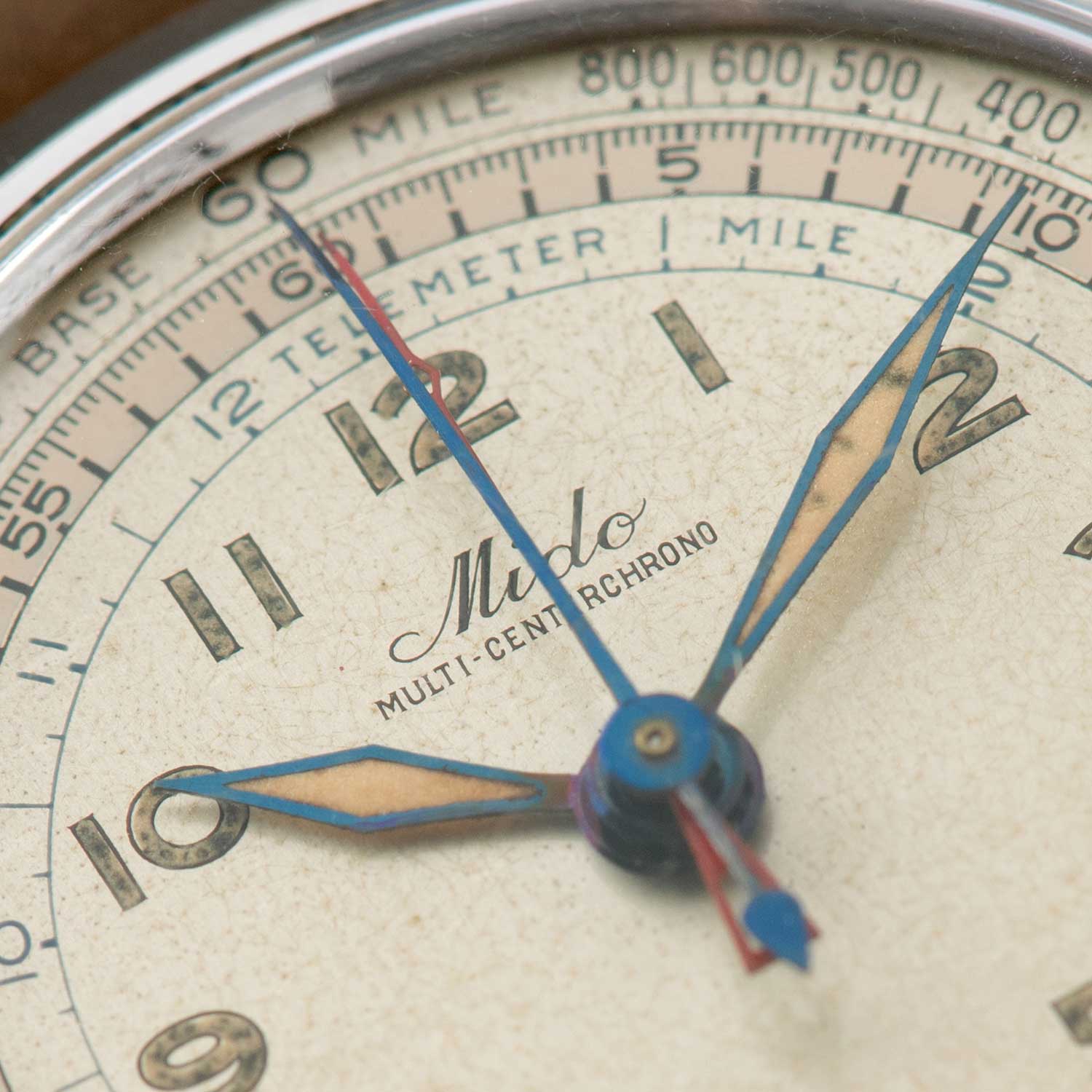
The four hands and dual scales of the Mido Multi-Centerchrono.
Do you recognise the pushers? The so-called sunburst pushers are actually the same as those that appear on the Patek Philippe references 1463 and 1563; what collectors refer to as “Tasti Tondi,” from the Italian for “round buttons”. The steel Patek 1463 was, in fact, housed in a Borgel case and the Mido Multi-Centerchrono shares the same winding crown as the 1463. In fact, the whole case of the Mido is similar to the Patek 1463, if maybe a little less fluid and refined to my eye. It is, however, still an incredibly cool and classy-looking watch with its signature oversized round pushers and winding crown. In my mind, these watches are the thinking man’s chrono but with a price tag that is literally a hundredth of a top-tier steel Patek Philippe 1463.
Know more about the Tasti Tondi here.
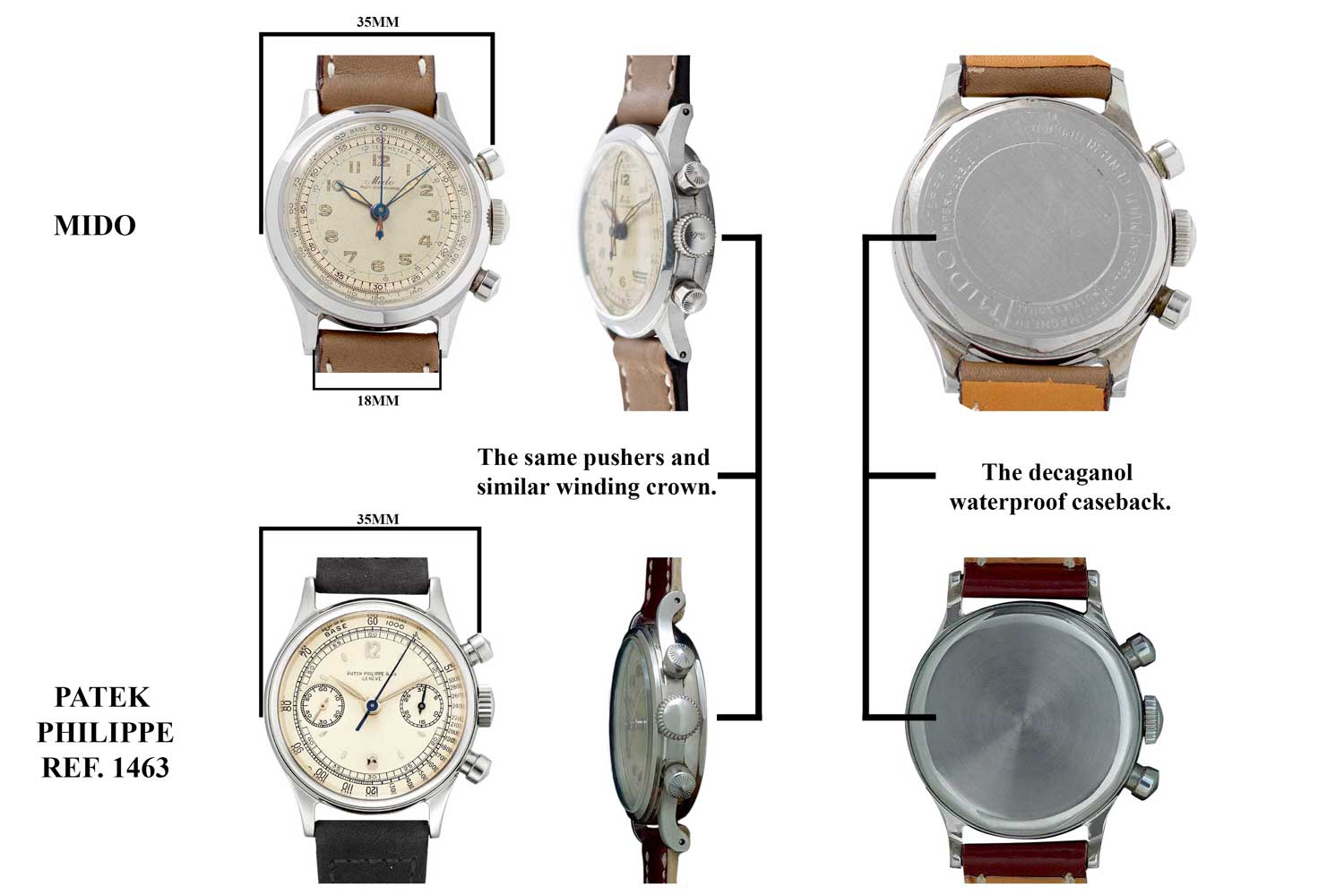
The steel Patek 1463 was housed in a Borgel case and the Mido Multi-Centerchrono shares the same winding crown as the 1463.
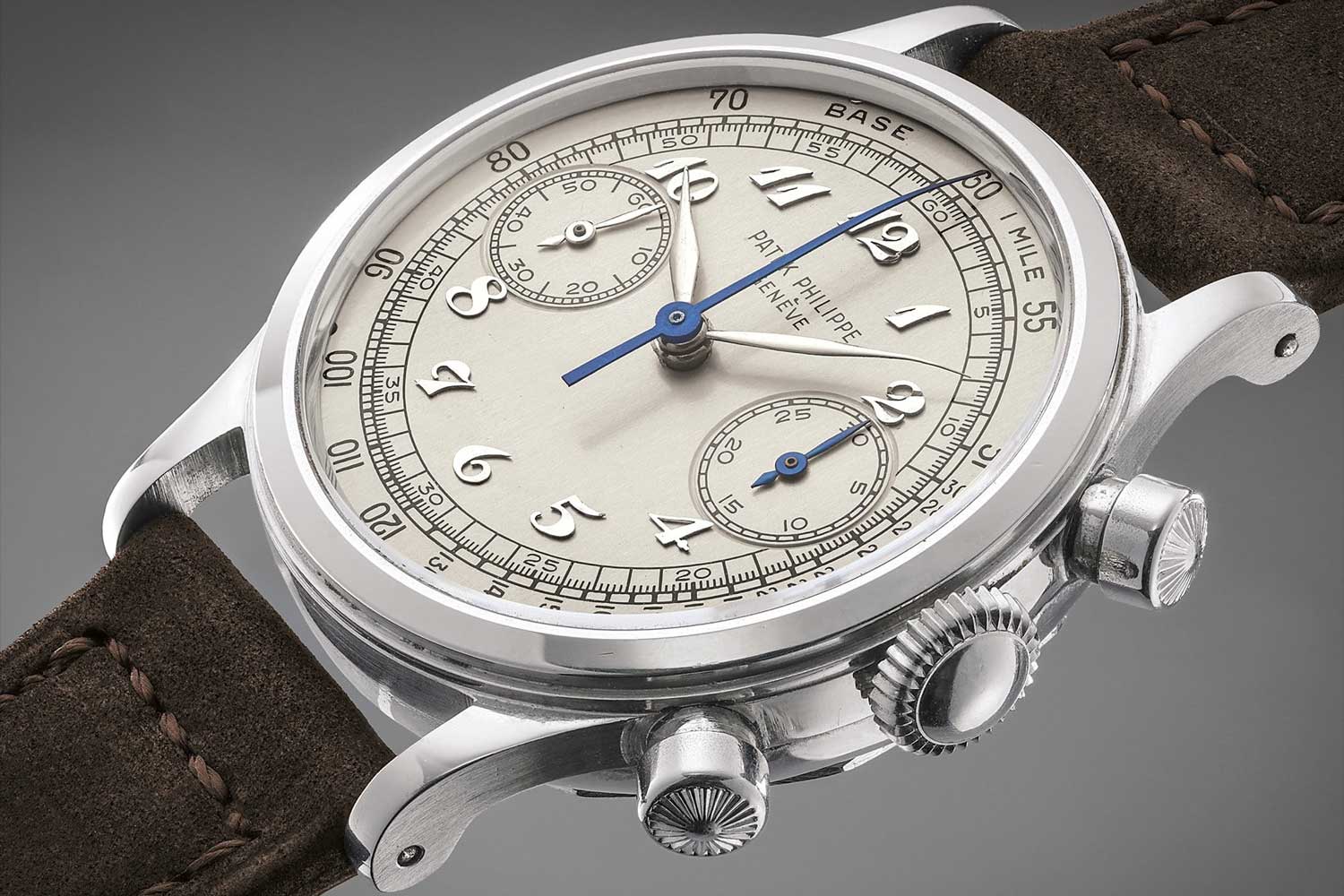
1950 Patek Philippe chronograph ref. 1463 in steel with Breguet numerals, featuring the famed François Borgel and the beloved crown and chronograph pusher that is today synonymous with the 1463 (Image: phillipswatches.com)
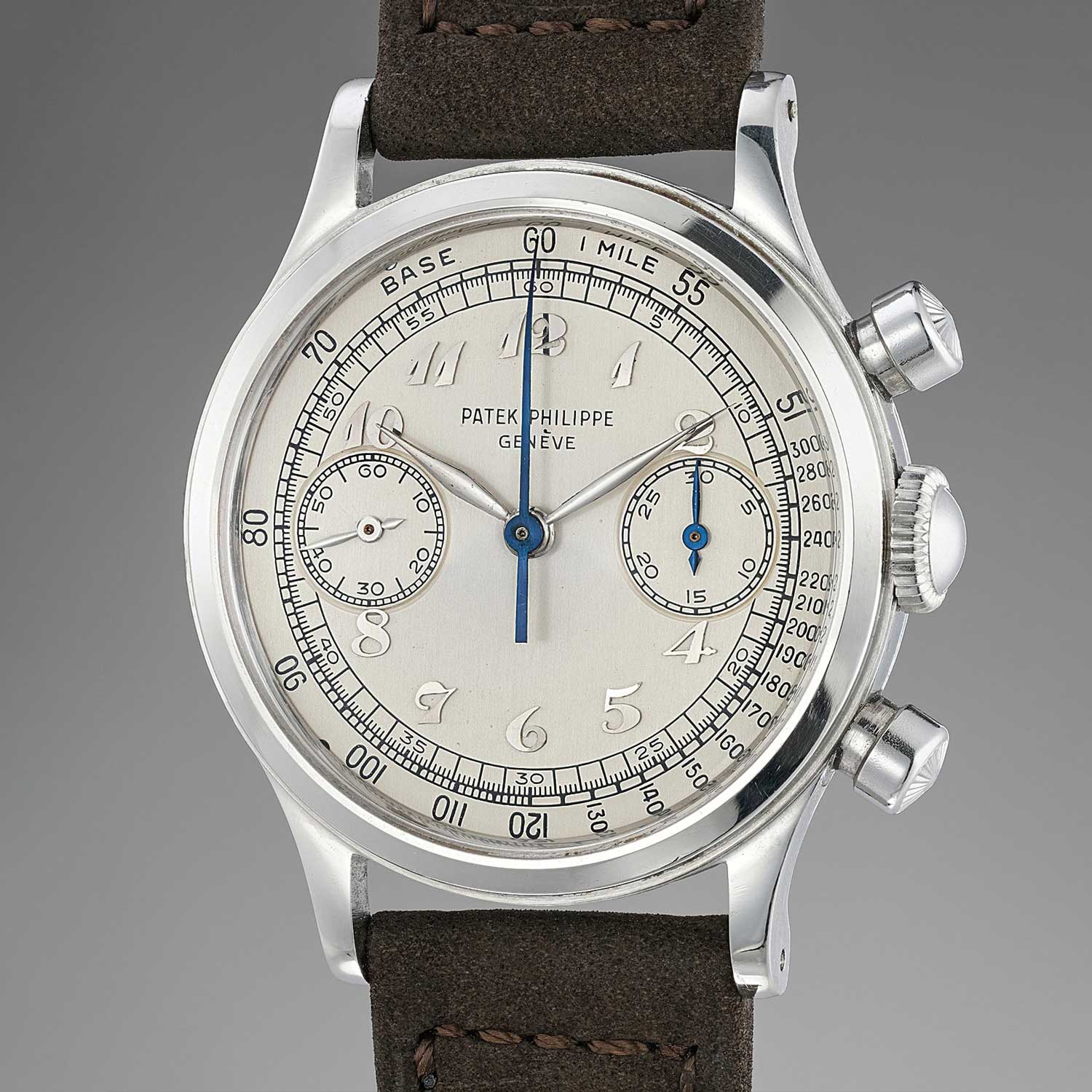
1950 Patek Philippe chronograph ref. 1463 in steel with Breguet numerals (Image: phillipswatches.com)
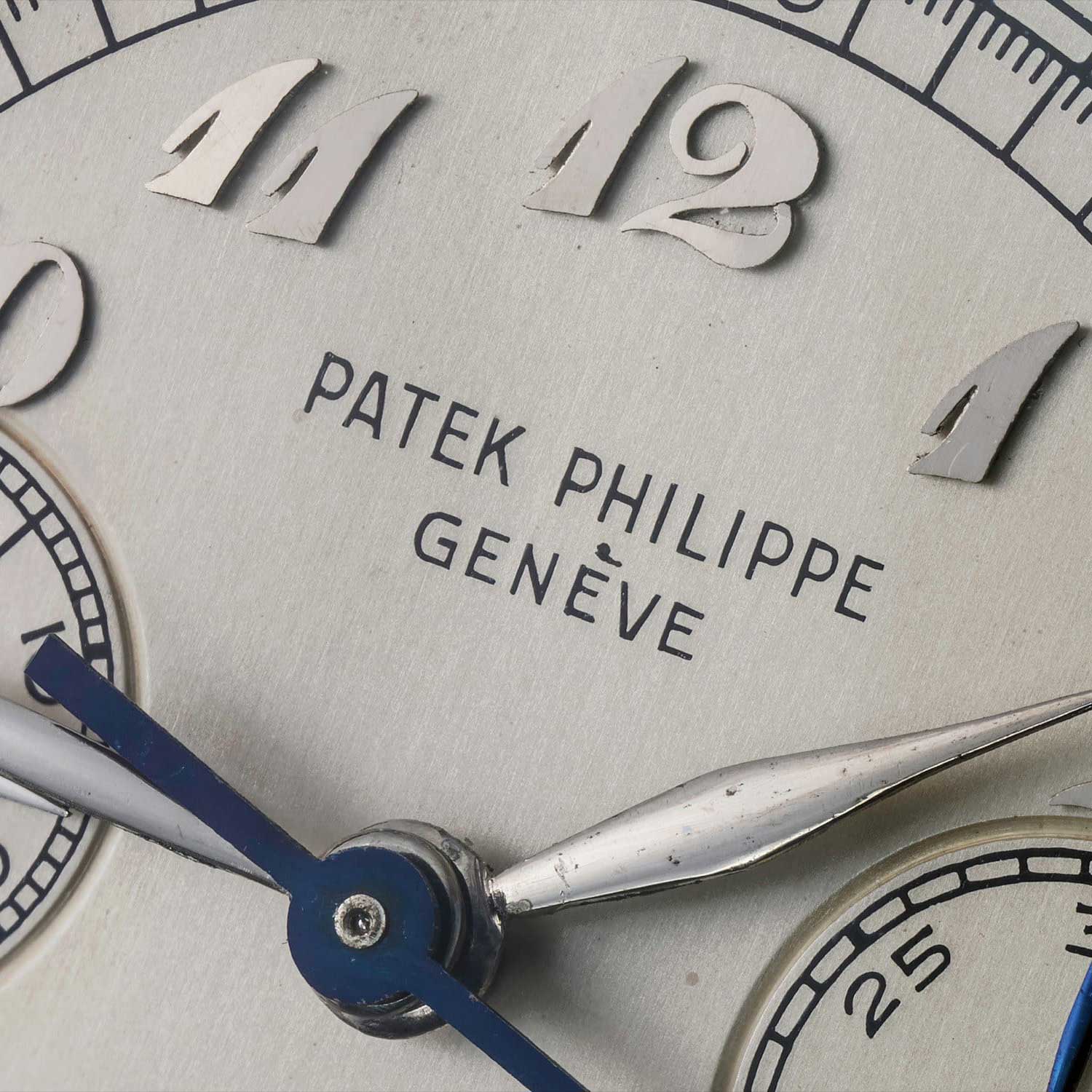
1950 Dial details on the Patek Philippe chronograph ref. 1463 in steel with Breguet numerals (Image: phillipswatches.com)
A Multi-Tool Pioneer
The Multi-Centerchrono (MC) comes into its own when we look at the overall aesthetics of the dial. Where one would normally expect two sub-registers on a watch like this, the MC is completely clean with its radium Arabic hour markers and two-tone layout. Mido’s original advertising slogan for this model was, “Here is the only chronograph that looks like a handsome watch,” which perfectly sums up the clean look that a lack of sub-registers bestows upon a dial. So how does it work? Well, at first glance, you could be forgiven for thinking that this watch is a split-seconds watch, as per the Patek 1563 chrono (also a “Tasti Tondi”). In fact, the two centre seconds stopwatch hands are for reading seconds and minutes. In the case of the illustrated example, the blued steel hand measures seconds and the red hand minutes. So, multi-central hands (hours, minutes, chrono seconds and chrono minutes) on the Multi-Centerchrono; it does what it says on the tin!
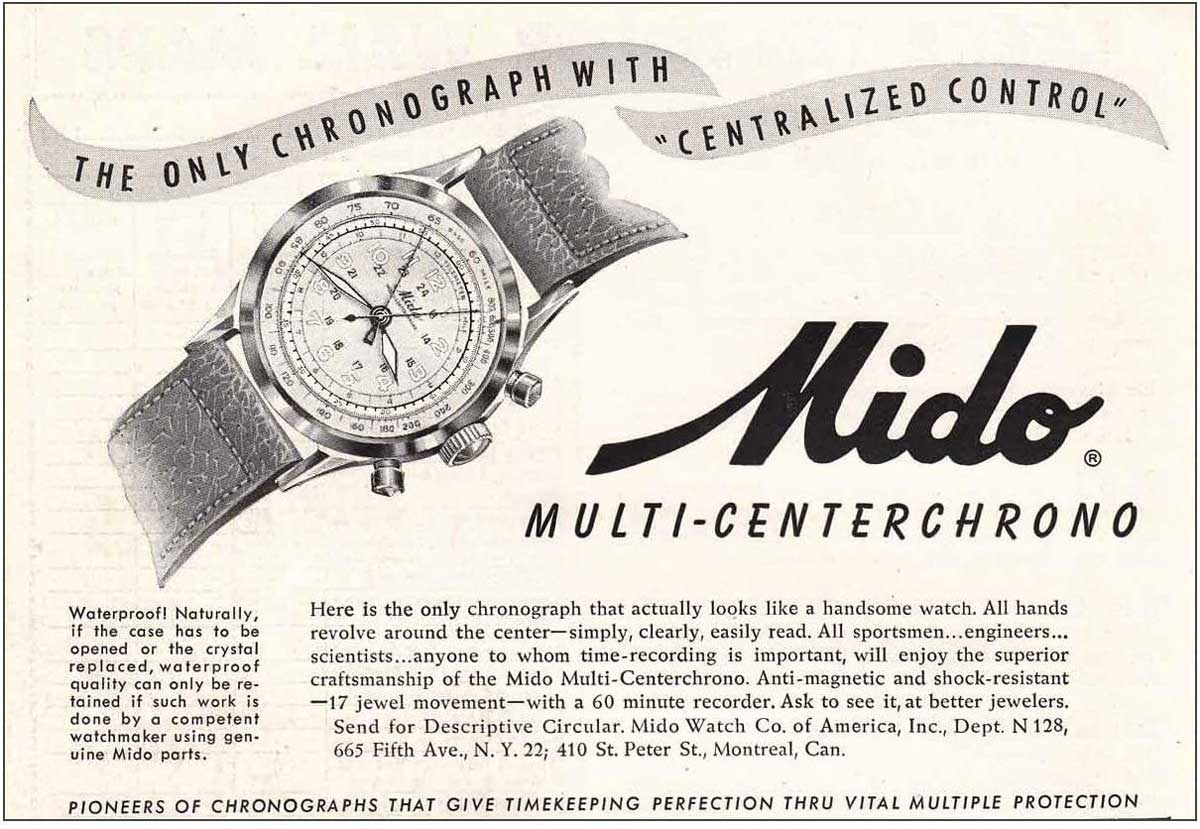
Mido’s original advertising slogan for the Multi-Centrechrono, “Here is the only chronograph that looks like a handsome watch,” emphasised the clean look of the dial.
And this 35mm pocket rocket isn’t done yet. Like the Patek 1463, the dial has a tachymeter scale for measuring speed. In the 1920s and onwards, motor racing became more popular and wristwatch manufacturers began adapting their watches to include scientific scales that enabled not only the time of an event to be measured, but also average speeds reached. The tachymeter allowed the wearer to measure the elapsed time it took to cover the distance of a mile or kilometre and know what the average speed of that run was. The Mido also has a telemeter scale, which can be used to accurately assess the distance of an incident by timing the journey of its sound. This was an essential tool in the First and Second World Wars. A commanding officer could start the chronograph when he saw a flash of artillery and then stop it when he heard the sound of the explosion. The reading on the telemeter would then tell him how far away the explosion had taken place, thus making it easier to plot enemy positions.

The story of 10 sides — the decagonal caseback made waterproof by François Borgel.
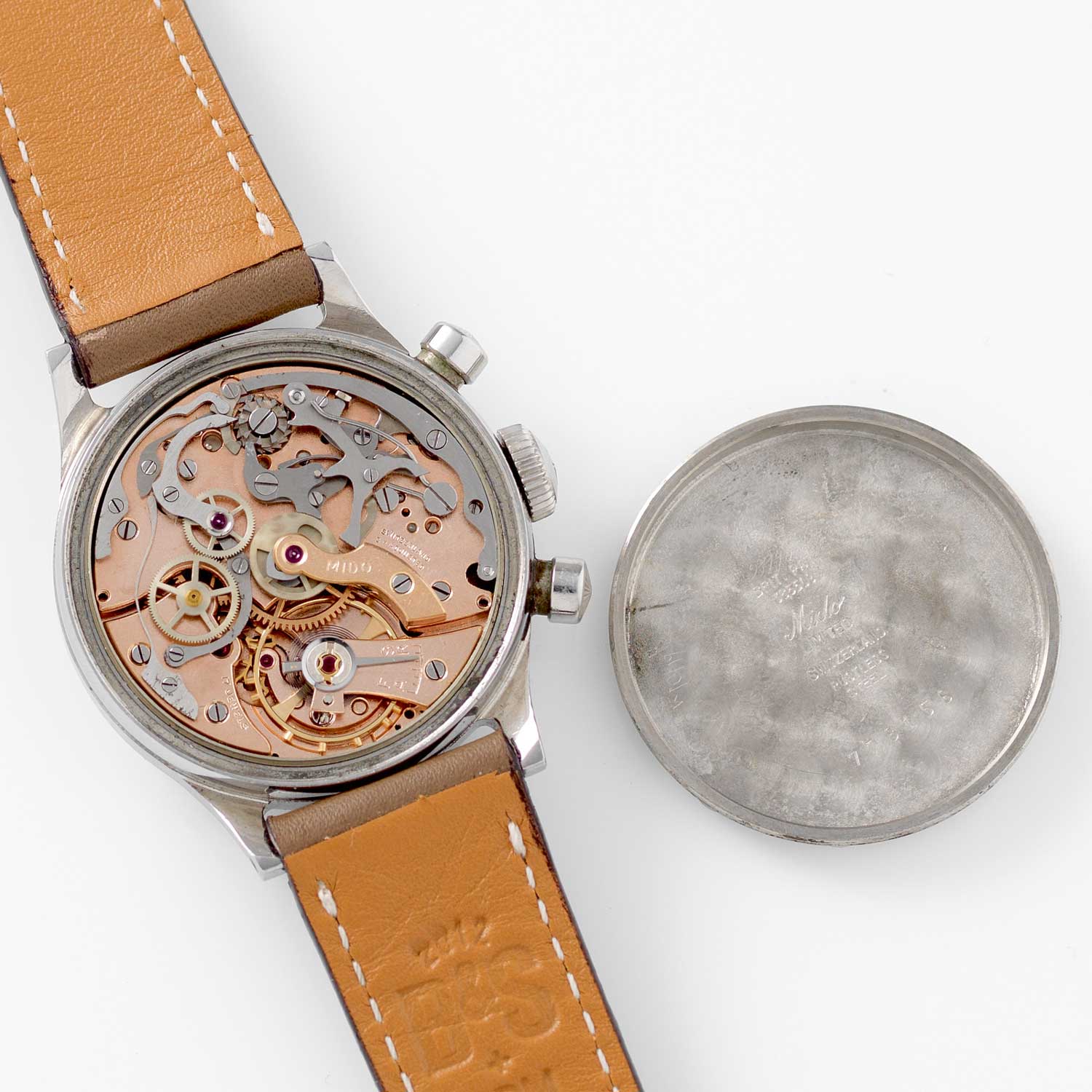
The engine room — the modified Valjoux VZ calibre 1300 movement.
The example that I have used to inform and illustrate this article was discovered and photographed by my dear friend Bernhard Bulang. This is the second such watch that he has found and he loves them! He says, “The case of these watches is just so cool. The way they sit on the wrist like a tool watch with an aesthetic that is not overly refined. I have loved collecting and selling these steel waterproof chronos for over 10 years now and the purity of the steel and the height of the case, due to that screw-down caseback, is perfect for me. And then, juxtaposed with the steel case are the detailed and refined pushers that you also see on the Patek 1463, that were also made by Borgel. OK, the Mido’s case isn’t quite as fluid as the ‘Tasti Tondi,’ but I love its own unique character and style. ”
And it’s not just the case that Bulang loves: “On the wrist, the Mido always gives me that split-seconds, four-hand feeling against the clean dial without subdials. There really is a lot of watch in these little gems!”
A multi-tool watch that packs a lot into its classy 35mm case. Waterproof, antimagnetic, chronograph, telemeter and tachymeter; it really is a wrist-mounted Swiss army knife. Whatever adventure you choose to undertake, with the Mido Multi-Centerchrono on your wrist, you won’t go far wrong. Mido’s advert for this watch sums it up perfectly: “The perfect timepiece for Aviators, Doctors, Engineers, Chemists, Sportsmen, Physicists, Explorers.”
[td_block_text_with_title custom_title=”Mido Multi-Centerchrono (1940s)”]
Movement
Modified manual-winding Valjoux VZ calibre 1300; hours, minutes and seconds; chronograph; tachymeter; telemeter
Case
35mm; steel case by François Borgel; waterproof
Price
Approx. USD 7,000–9,000
[/td_block_text_with_title]













